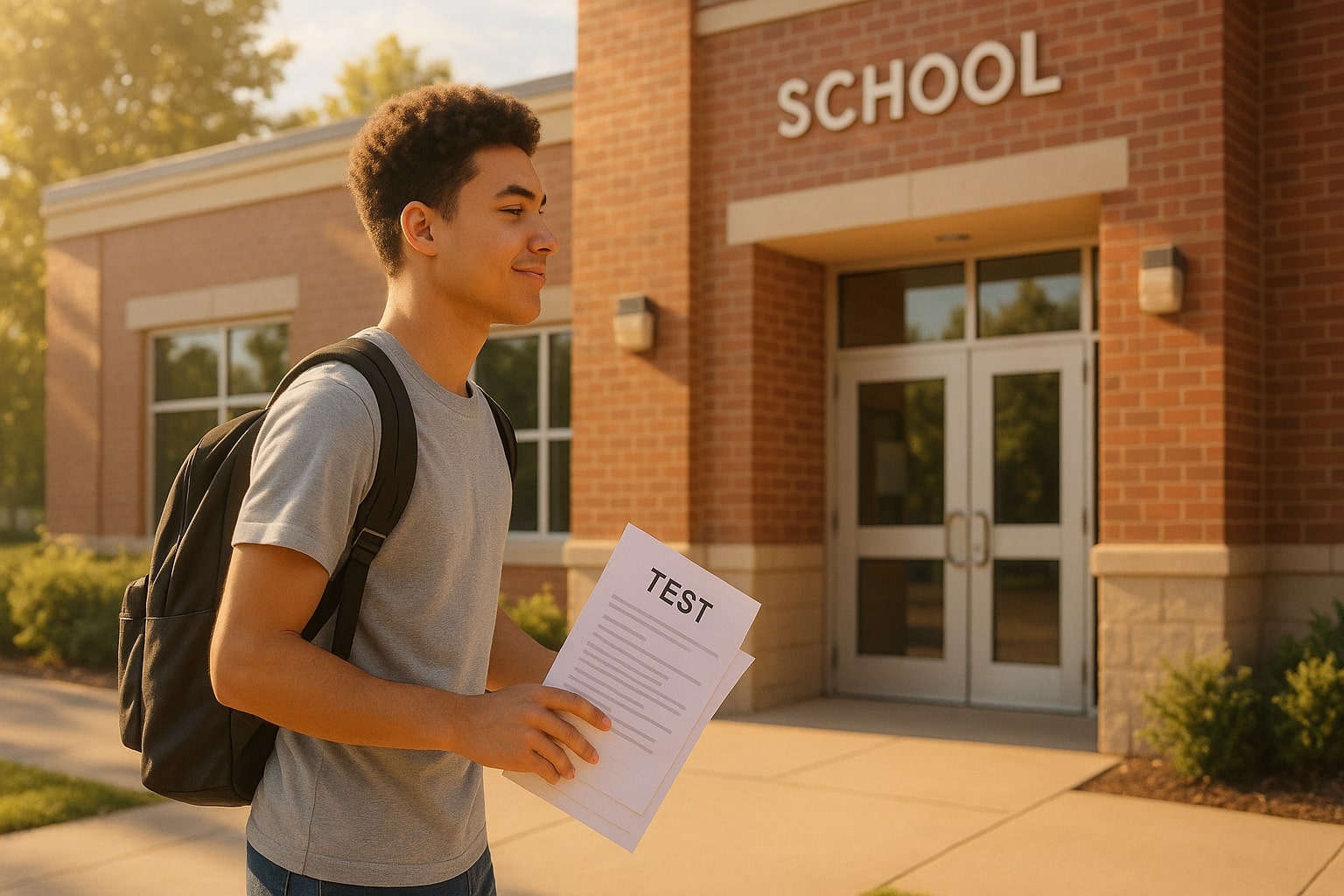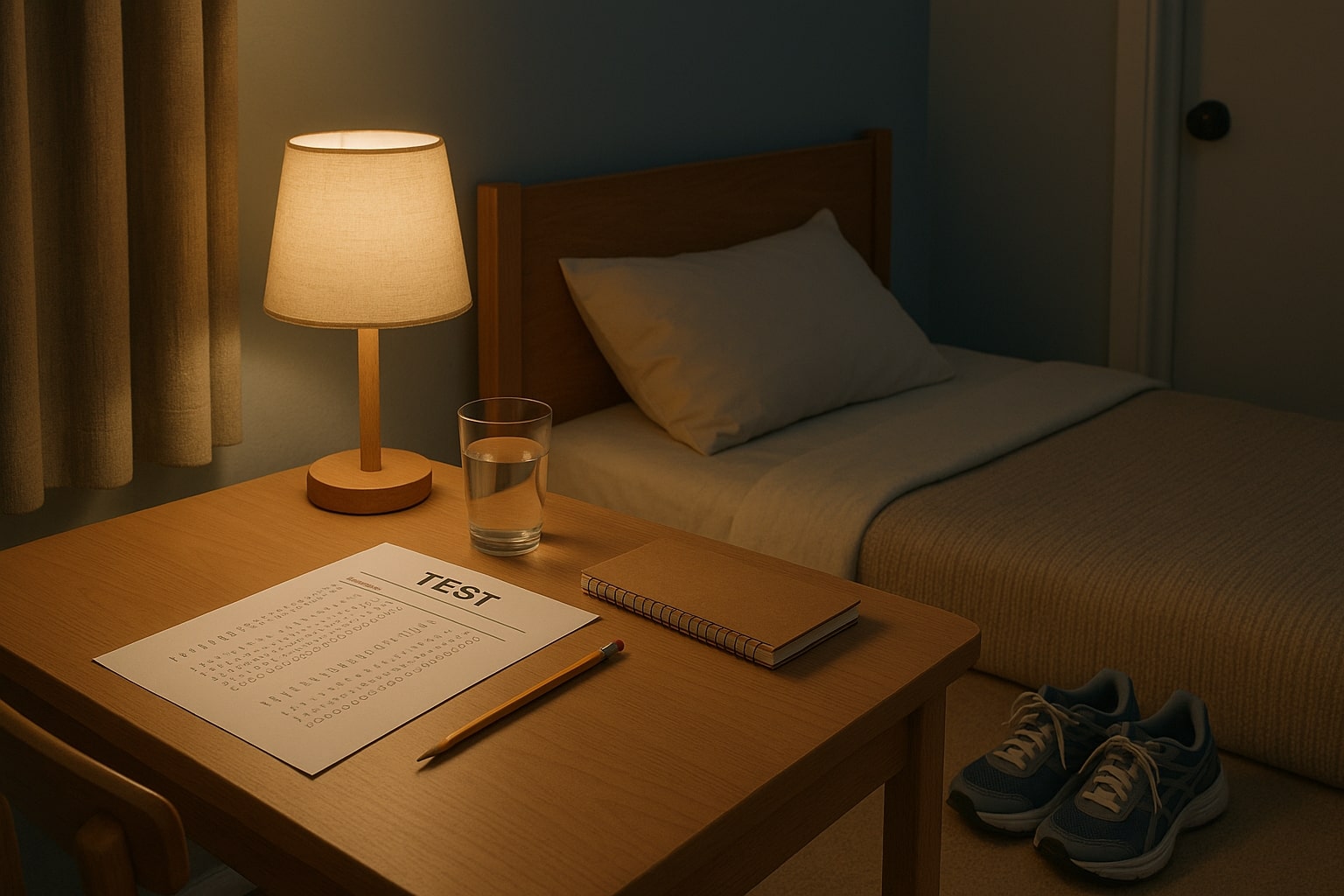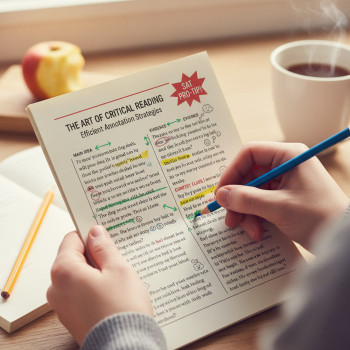Why sleep before the SAT matters more than you think
We’ve all heard it: “Get a good night’s sleep before the test.” But why is this advice repeated so often? Because sleep is not just a luxury — it’s the secret sauce that helps your brain perform, recall, and problem-solve. The night before the SAT isn’t a make-or-break marathon of last-minute cramming; it’s the moment when everything you’ve practiced gets stitched together.
Think of sleep as the brain’s overnight workshop. It consolidates memories, sharpens attention, calms nerves, and balances emotions. Walk into the test after a restful night and you’ll notice clearer thinking, better timing, and the kind of steady focus that makes tricky questions feel manageable rather than overwhelming.
Common sleep mistakes students make before the SAT
Before we get into what to do, let’s look at what not to do — the habits that quietly sabotage your test-day performance.
- All-night cramming: You might squeeze in a few extra practice problems, but losing sleep to study usually harms performance more than it helps.
- Inconsistent bedtimes: Week-to-week variations in sleep time make your internal clock unpredictable on test day.
- Evening caffeine and sugar binges: That late energy spike can wreck both falling asleep and the quality of sleep you get.
- Overlong naps the day of the test: Sleeping too long or too late reduces the pressure to sleep at night and can leave you groggy.
- Screen-glow marathons: Blue light from phones or laptops delays melatonin and pushes your sleep time later — not great the night before the SAT.
Start early: The week-of plan that actually helps
Performing well on the SAT is a multi-day project. If possible, begin your sleep-focused preparation at least a week out. Small, consistent habits have larger effects than frantic last-minute changes.
7–5 days before the SAT
- Keep a stable bedtime and wake time. Aim for the same sleep window every night — consistency beats quantity sometimes.
- Reduce late-night heavy study sessions. Shift practice to earlier in the day when possible so evening wind-down is real.
- Limit caffeine: If you drink coffee or energy drinks, stop by early afternoon.
4–2 days before the SAT
- Practice full-length, timed sections at the time of day your test will be. This helps your body clock and pacing.
- Try a short, strategic nap (20–30 minutes) if you’re sleep-deprived — earlier in the afternoon only.
- Plan your test logistics: know your test start time, travel time, and what you’ll bring. Eliminate anxiety that could keep you awake.
Night before the SAT
- Wind down early with a calm routine: light reading, stretching, or a warm shower. Avoid heavy study and high-stakes reviewing.
- Eat a balanced dinner that includes lean protein and complex carbs — foods that won’t spike blood sugar late at night.
- Go to bed at your normal time. Prioritize sleep over a final review; rest will serve your memory better.
Practical bedtime routine: an hour that makes a difference
Think of the hour before bed as a mini-ceremony to tell your brain it’s time to rest. Here’s a simple, student-friendly routine you can follow the night before (or the nights leading up to) the SAT.
- 60–45 minutes before bed: Turn off intense study, dim lights, and put devices away (or use blue-light filters). Try a warm shower or light stretching.
- 45–30 minutes before bed: Do a low-stakes relaxing activity like journaling about what went well in your prep, reading a light novel, or listening to calm music.
- 30–10 minutes before bed: Prepare your test materials (admission ticket, approved ID, snacks, charger), lay out clothes, and make a quick checklist for the morning to reduce morning stress.
- Last 10 minutes: Practice a short breathing or grounding exercise — simple box breathing (4-4-4-4) or a body-scan to release tension.
Science-backed sleep tips that are easy to follow
Here are a few specific strategies grounded in sleep science, translated into student-friendly actions.
- Maintain a regular wake-up time: Even on weekends during test prep, try to wake up within an hour of your usual time so your circadian rhythm stays steady.
- Expose yourself to morning light: Natural light in the morning helps anchor your internal clock and improves alertness on test day.
- Avoid alcohol and heavy meals before bed: Both can fragment sleep and reduce REM and deep-sleep stages that support learning.
- Limit screen time 60 minutes before bed: If you must review, switch to paper or use warm light settings and reading modes.
- Keep the bedroom cool and dark: A slightly cool room (around 65–68°F, or what feels comfortable) and darkness improve sleep depth.
Napping the smart way (and when to skip it)
Naps can be helpful, but they’re a double-edged sword. Use them strategically during the week-of the SAT but be careful on test day.
- Short naps (15–30 minutes) improve alertness and don’t usually cause sleep inertia. Good if you’re dragging in the afternoon of the days before the test.
- Avoid long naps (60+ minutes) late in the day — they can interfere with nighttime sleep and leave you groggy.
- On test morning, skip a long nap. If you’re extremely tired and need a boost, a very short 10–20 minute nap earlier in the morning (if you have time and a quiet place) can help, but be cautious.
Mental strategies to calm pre-test anxiety
Nerves can keep you awake. Here are simple, practical tools to quiet your mind so sleep actually happens.
- Write it out: Spend 10 minutes writing down the top three things you’re worried about and one action you’ll take for each. You’ve moved the worry from mind to paper.
- Set a “worry window”: Schedule 15 minutes earlier in the day to intentionally think about stressors, then close the window. This helps stop rumination at night.
- Grounding exercises: Use sensory grounding (name five things you can see, four you can touch, three you can hear) to bring your attention away from anxious loops.
- Visualization: Picture the test day morning going smoothly — calm, collected, eating your planned breakfast, arriving early. Mental rehearsal reduces fear of the unknown.
What to eat and drink in the 24 hours before the SAT
Food isn’t glamorous, but it matters. The right nutrition helps steady your blood sugar and mood, which in turn helps your sleep and morning focus.
- Night before: A balanced dinner—grilled chicken or tofu, a portion of whole grains, vegetables, and a small serving of healthy fat (avocado or olive oil).
- Avoid heavy, spicy, or unfamiliar foods that might upset your stomach.
- Limit sugary desserts late at night; they can disturb sleep architecture.
- Test morning: Eat something familiar and balanced—Greek yogurt with fruit and granola, a peanut butter toast and banana, or oatmeal. Combine carbs and protein for slow energy release.
- Hydrate, but don’t overdo it right before bed to avoid middle-of-the-night bathroom trips.

Morning of the SAT: wake-up routine for peak performance
The morning you wake up for the SAT, a calm, predictable routine will set the tone. Keep it simple, consistent, and practiced.
- Wake up at your normal time so your body expects it. Don’t experiment with radical changes.
- Get sunlight exposure within the first hour—open curtains, step outside for a brief walk, or have breakfast by a bright window.
- Do light movement: 5–10 minutes of stretching or dynamic movement to increase circulation and clear grogginess.
- Eat your usual breakfast—nothing new. Pack a small snack for testing breaks like a banana, trail mix, or granola bar.
- Run through a short mental checklist to calm nerves: breathing, a reminder of your pacing plan, and one confidence cue (a quick phrase like “I’ve prepared for this”).
Table: Quick sleep checklist — night before and morning of the SAT
| Timeframe | What to do | Why it helps |
|---|---|---|
| 7–3 days before | Keep regular sleep schedule; practice sections at test time | Stabilizes circadian rhythm and pacing |
| Night before | Wind down early, prepare test materials, light activity | Reduces anxiety and ensures restful sleep |
| 30–60 minutes pre-bed | Limit screens, light reading, breathing exercises | Encourages melatonin release and relaxation |
| Morning of test | Sunlight exposure, balanced breakfast, light movement | Boosts alertness and steadies energy |
What to do if you slept badly the night before
Not every night goes perfectly. If you had a rough sleep the night before the SAT, don’t panic. You can still perform well by using a few targeted strategies.
- Accept it quickly: Worrying about poor sleep wastes cognitive energy. Acknowledge it and move on.
- Use short alerting strategies: brisk walk, light snack with protein, and brief practice of a favorite problem type to warm up your brain.
- Rely on pacing and technique rather than trying to brute-force attention. Trust your practice and use the test structure to guide you.
- If you feel groggy, use controlled breathing to re-center: inhale 4 seconds, hold 4, exhale 6 — repeat three times to steady focus.
Study-rest balance: why rest days are part of prep, not the enemy
High-performance students know rest is part of training. A few well-placed rest days during your prep period improve retention and reduce burnout. Quality of study beats quantity when your brain has time to consolidate what you learn.
- Schedule active study days and light recovery days (no heavy practice, but review flashcards or low-pressure timed drills).
- On recovery days, do physical activity, socialize, or pursue a hobby you enjoy to lower stress and reset motivation.
- Remember: one restful night can’t replace months of consistent preparation, but systematic rest multiplies the value of your study hours.
How tutoring and tailored support can protect your sleep
Sometimes the reason students lose sleep isn’t biology — it’s uncertainty: What should I focus on? Am I using my time well? When answers to those questions are messy, late-night cramming creeps in. Personalized tutoring can reduce that uncertainty.
For students who want structure, Sparkl’s personalized tutoring offers 1-on-1 guidance, tailored study plans, expert tutors, and AI-driven insights that pinpoint weak spots so evening study becomes efficient and predictable. When study plans are clear, students can actually stop earlier and sleep earlier — which is exactly what you want the night before the SAT.
Simple tools to track sleep and not over-fixate
It’s tempting to obsess over every minute of sleep. A gentle approach works best.
- Use a sleep journal rather than a second-by-second app: note bedtime, wake time, how you felt, and any naps. Patterns emerge without anxiety-inducing detail.
- If you use a sleep tracker, treat the data as feedback, not judgment. One off-night is not a trend.
- Focus on feelings of rest and alertness more than exact sleep minutes — how you feel in a practice test is a better guide than raw numbers.
Real-world examples: how students made sleep work for them
Case 1: Maya, junior, found she was cramming until midnight. Her tutor recommended moving practice sessions to late afternoon and establishing a 10 p.m. shutdown. Within a week she slept more and felt substantially calmer on practice tests.
Case 2: Jamal, senior, practiced full sections in the morning to align with an early test. He added a 20-minute afternoon nap two days a week and noticed his concentration in evening sessions improved — without any loss of night sleep.
These aren’t miraculous changes; they’re small swaps that reduce cognitive load and make test day feel familiar, not foreign.
Checklist: night-before and morning-of essentials
- Night-before: Test admission ticket and ID ready, clothes laid out, snacks packed, alarm set, brief wind-down routine followed.
- Morning-of: Wake at regular time, sunlight exposure, balanced breakfast, short movement, mind-calming breathing, leave with plenty of time to spare.
- Mental cue: On your way to the test, repeat a short confidence phrase. Let it be simple: “I’ve prepared. I will do my best.”

Final words: make sleep part of your SAT strategy
Preparing for the SAT is not only about mastering math strategies or reading techniques — it’s about crafting the conditions where your brain can perform its best. Sleep is one of the highest-leverage tools you have. A planned, consistent approach to rest protects your practice gains, sharpens attention, and keeps anxiety manageable.
If you find uncertainty creeping in — unsure how to prioritize practice or how to build a schedule that allows both efficient studying and solid sleep — personalized help can be invaluable. Sparkl’s tutors specialize in creating study plans that are targeted and time-efficient. With 1-on-1 guidance and AI-driven insights to show where to focus, you can study smarter and sleep easier.
On test day, remember: calm trumps frantic. Trust the preparation you have invested. Walk in rested, breathe, and approach each question with steady focus. Sleep isn’t a magic spell, but when you treat it as an essential part of preparation, it becomes one of the clearest paths to your best performance.
Quick recap: the 5 most important sleep tips
- Keep a consistent sleep schedule the week before the SAT.
- Wind down early the night before and avoid heavy late-night studying.
- Use short, strategic naps (15–30 minutes) if needed — avoid long late naps.
- Follow a simple morning routine: sunlight, balanced breakfast, light movement.
- Address uncertainty with a plan — personalized tutoring (like Sparkl’s 1-on-1 support) can help make your study time efficient so sleep comes first.
Parting encouragement
You’ve done the work to get here. Treat sleep like a tool in your kit, not an afterthought. Rest is not selfish — it’s strategic. Sleep well, show up with confidence, and let your preparation shine.
















No Comments
Leave a comment Cancel